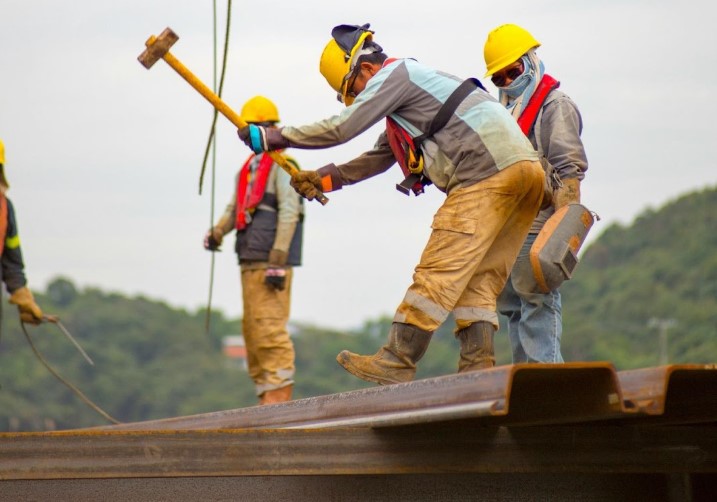Top 7 Best Practices for Lone Working Health and Safety
Introduction
Whether in construction, maintenance, retail, healthcare, or utilities, lone workers play a crucial role in business operations. From late-night cleaners and field technicians to remote healthcare staff, these employees ensure that essential functions continue even outside regular team-based environments.
However, working alone puts employees at greater risk than their team-based counterparts. Without colleagues nearby, lone workers may face physical hazards, security threats, and mental health challenges with no immediate assistance. To uphold high health and safety standards, organizations must adopt best practices for lone working that combine policy, training, technology, and proactive support.
Here are the top 7 best practices every organization should implement to protect lone workers.
1. Develop a Robust Lone Worker Policy
A well-structured Lone Worker Policy provides a foundation for safety and accountability. It should:
Clearly outline procedures for daily operations, check-ins, and emergency situations.
Define roles and responsibilities of workers, supervisors, and managers.
Specify risk controls, including use of PPE, communication devices, and monitoring tools.
Include emergency actions, escalation protocols, and first responder procedures.
A formal policy not only sets expectations but also demonstrates your commitment to HSE compliance and creates a culture of accountability.
2. Identify and Assess All Lone Working Roles
Risk assessment is the cornerstone of lone worker safety. Organizations should:
Identify who works alone, including temporary staff, contractors, and interns.
Determine where and when lone work occurs, covering remote locations, night shifts, and confined spaces.
Assess hazards present, such as machinery, chemicals, environmental risks, and security threats.
Define controls needed, from PPE and training to monitoring devices and emergency plans.
Risk assessments should be dynamic and regularly updated, particularly after incidents or when new work conditions arise. Documenting these assessments ensures accountability and informs training and equipment needs.
3. Ensure Effective Communication Systems
Lone workers must be able to call for help immediately in any situation. Effective communication systems include:
Mobile phones or radios for basic contact.
Scheduled check-ins, such as calls at the beginning and end of shifts.
GPS-based lone worker apps with panic buttons or man-down alerts.
Real-time monitoring dashboards for supervisors to track worker locations and respond quickly to emergencies.
Reliable communication systems reduce response times during emergencies and give lone workers confidence that help is available.
4. Provide Comprehensive Lone Worker Training
All lone workers should receive training that equips them to recognize hazards and respond safely. Training should cover:
Identifying hazards in their specific work environment.
Managing aggression or threats, particularly in public-facing roles.
Using personal safety devices, alarms, and monitoring tools effectively.
Emergency protocols, including evacuation procedures, first aid, and reporting incidents.
Refresher training ensures that workers remain confident and competent, even when procedures or risks change.
5. Monitor Mental Health and Wellbeing
Isolation can take a psychological toll. Employers should create a supportive environment by:
Encouraging regular contact with supervisors or peers.
Offering access to mental health resources, such as counseling or employee assistance programs.
Promoting work-life balance, avoiding excessive overtime or unrealistic deadlines.
Monitoring for signs of stress, fatigue, or anxiety, and intervening proactively.
Psychological safety is as important as physical safety; employees who feel supported are more alert, engaged, and productive.
6. Perform Regular Lone Working Audits
Regular audits help organizations track compliance and effectiveness of lone working procedures. Audits should include:
Reviewing incident logs and near-miss reports.
Gathering feedback from workers on procedures, devices, and perceived risks.
Evaluating whether risk assessments, monitoring systems, and training remain effective.
Identifying areas for improvement and updating policies accordingly.
Audits create a feedback loop that continually strengthens your lone worker safety program.
7. Test and Drill Emergency Responses
Emergency simulations are essential for preparing workers and testing protocols. Drills should:
Simulate realistic scenarios, such as medical emergencies, security threats, or equipment failures.
Test the effectiveness of communication tools, response times, and coordination with supervisors.
Highlight gaps or weaknesses in existing procedures, allowing organizations to refine plans.
Regular drills ensure that workers know exactly what to do when emergencies arise, reducing panic and improving outcomes.
Conclusion
Lone working is not inherently unsafe, but without the right culture, controls, and support systems, the consequences can be severe. Protecting lone workers is not just a legal requirement—it’s a moral obligation that safeguards employees’ physical and mental wellbeing.
By combining robust policies, thorough risk assessments, reliable communication, training, mental health support, audits, and emergency preparedness, organizations can significantly reduce risks and foster a safe, productive, and confident workforce.
Remember: No worker should feel truly alone on the job.


